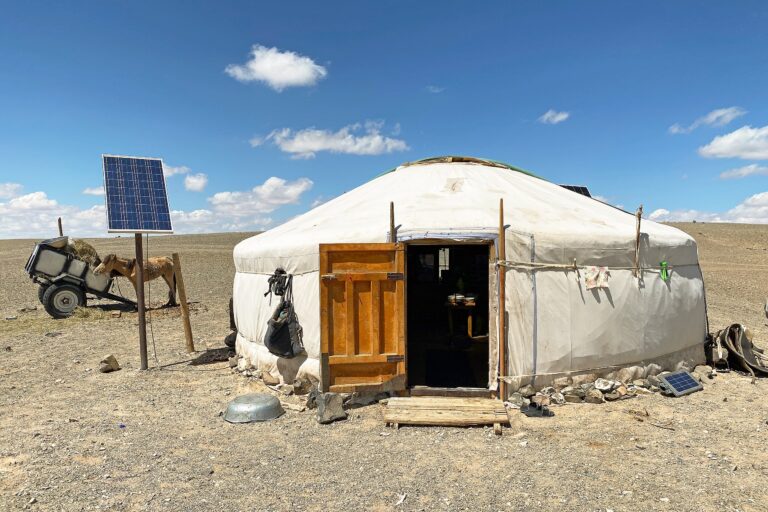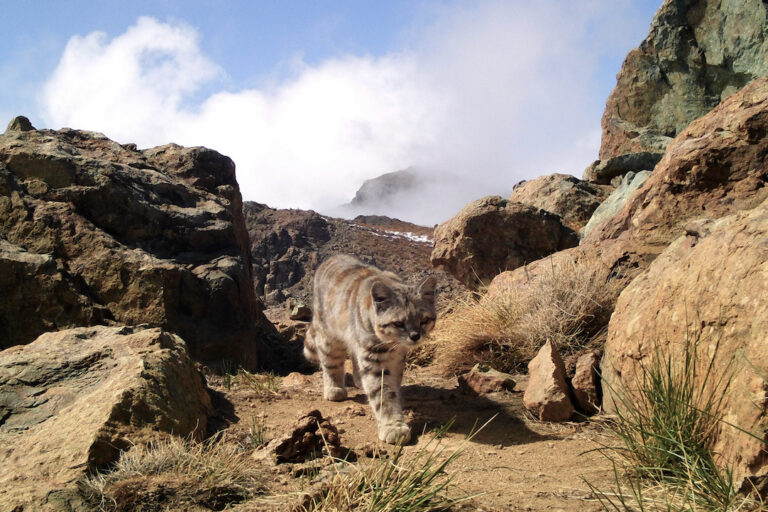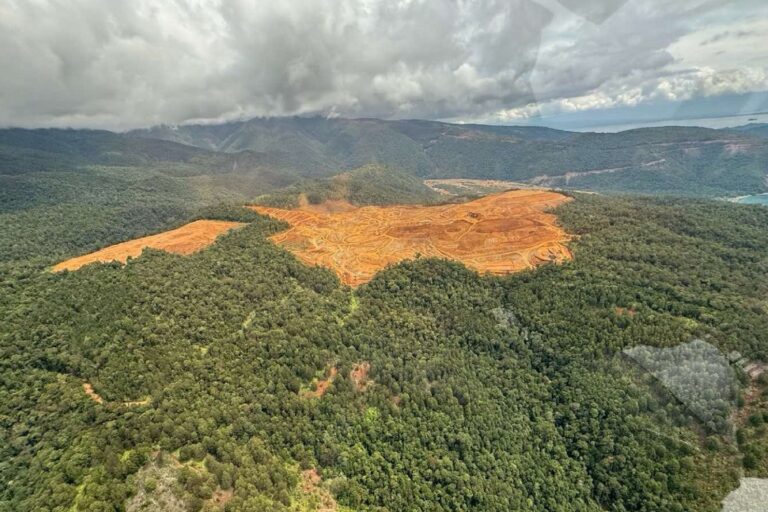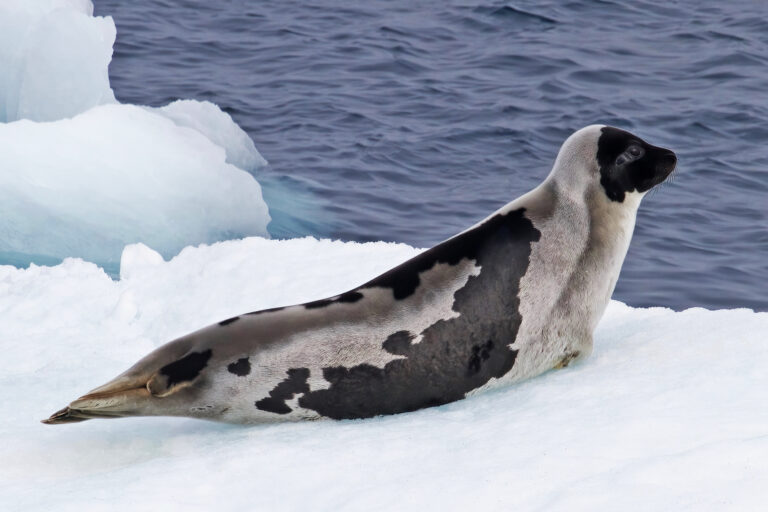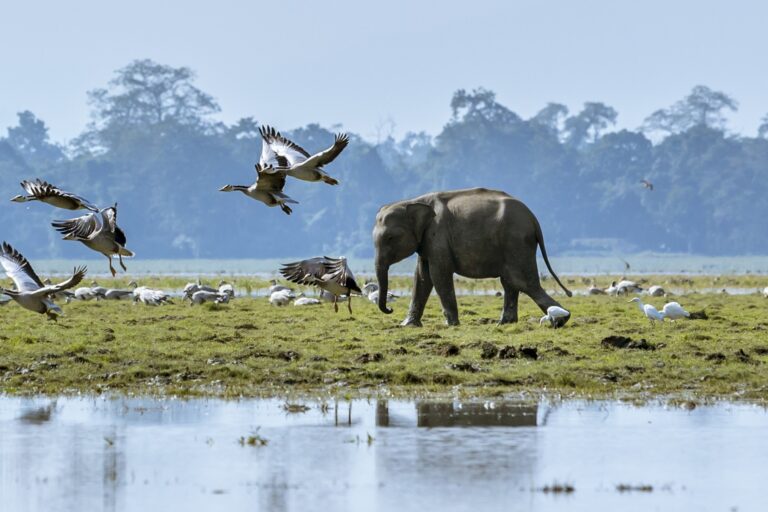- Rural communities began protecting the threatened giant South American turtle (Podocnemis expansa) along a 1,500-kilometer (932-mile) stretch of the remote Juruá River in Brazil’s Amazonas state back in 1977 – becoming the largest community-based conservation management initiative ever conducted in the Brazilian Amazon.
- A new study shows that these community stewards – who protect turtle nests and receive payment only in food baskets – have had incredible success not only in preserving endangered turtle species, but also in conserving riverine invertebrate and vertebrate species, including migratory birds, large catfish, caiman, river dolphins and manatees.
- Today, the Middle Juruá River community-protected beaches are “true islands of biodiversity, while other unprotected beaches are inhabited by few species. They are empty of life,” say study authors. On the protected beaches, turtle egg predation is a mere 2 percent. On unprotected beaches on the same river, predation rates are as high as 99 percent.
- The study also helps debunk a Brazilian and international policy that proposed the eviction of local traditional communities from newly instituted conservation units because they would be detrimental to conservation goals. Instead, researchers agree, traditional communities should be allowed to keep their homes and recruited as environmental stewards.

During the Brazilian Amazon’s July to November dry season, a small number of remote beaches along a 1,500-kilometer (930-mile) stretch of the Juruá River in Amazonas state exhibit a remarkable display of abundant fauna diversity, as female freshwater turtles emerge to lay their eggs in the sand.
What is most striking about this particular federal Extractive Reserve (RESEX) of the Middle Juruá, however, is its contrast with other neighboring beaches along this Amazon tributary.
“When you arrive at one of those few protected beaches, you come across thousands of birds. There are so many that the noise they emit is deafening. Also there are giant South American turtles (Podocnemis expansa), and their close relatives, tracajás (Podocnemis unifilis), and pitiús (Podocnemis sextuberculata), as well as green iguanas (Iguana iguana), and lizards, among other [species],” João Vitor Campos-Silva told Mongabay. He is a postdoctoral researcher at Universidade Federal de Alagoas (UFAL). “These areas are true islands of biodiversity, while other unprotected beaches are inhabited by few species. They are empty of life.”
Another surprising fact: these beaches aren’t guarded by the government, or by international NGO staff; they’ve been protected for 40+ years by local riverine community members, paid only in food.


Campos-Silva is one of the co-authors of a study, “Unintended multi-species co-benefits of an Amazonian community-based conservation program,” conducted by the University of East Anglia (UEA), in partnership with UFAL, Anglia Ruskin University and the Federal University of Amazonas.
Recently published in the journal Nature Sustainability, the research documents the largest community-based conservation management initiative ever conducted in the Brazilian Amazon, and it attests to the profound difference between 14 beaches protected by these local traditional communities and thriving with biodiversity, and 14 other beaches with no such defense against poachers, and mostly empty of wildlife.
“That is the most important fact of the study, the disparity between [protected and unprotected] ecosystems within a single region,” said the ecologist. “The conservation effort [to safeguard] turtle nests resulted not only in their population increase, but also [in an increase of] the populations of many other species on those beaches.… Migratory birds lay their eggs there, such as black skimmers (Rynchops niger), large-billed terns (Phaetusa simplex), and sand-colored nighthawks (Chordeiles rupestris),” he said.
In the past, giant South American turtles [also known as Arrau turtles] were highly abundant along the Amazon River’s whitewater tributaries, said Carlos Peres, professor at the UEA’s School of Environmental Sciences and a study co-author. “These animals are extremely important as both mega-herbivores and prey species. For example, they sustain jaguar populations prowling river beaches in the dry season. However, the ecosystem role of large turtles in Amazonian rivers is not fully understood, and much additional work remains to be done.”

Conserving turtles, saving an ecosystem
Overexploitation of Podocnemis expansa, Latin America’s largest freshwater turtle, from the late 19th century onward, resulted in a Brazilian ban on the giant chelonian’s capture in 1967, but the poorly enforced measure did not significantly curb human predation of turtles and the harvesting of their eggs.
The species was classified as globally endangered on the IUCN Red List in the 1980s, and remains under intense pressure from poachers. Currently, in the main market of Manaus, the capital of Amazonas state, an adult giant Amazon turtle is worth R$1,000 (US$ 250), said Campos-Silva. “It is considered a resource of high economic value, so during the breeding season many people try to steal its eggs and the animal itself.” The once plentiful species has seen an estimated 30 percent decline in population over the last 90 years, according to Brazil’s ICM-Bio, the federal Chico Mendes Institute for Biodiversity Conservation.
In the face of its rapid population decline, community residents along the middle section of the Juruá river organized back in 1977 and began protecting three turtle-nesting beaches (known as tabuleiros) during the breeding season.
Today, 18 beaches along a 2,000-kilometer stretch of river are monitored 24 hours per day during the nesting period, according to Campos-Silva, and the long-term results of this community-based conservation effort are exceptional, the UEA study shows.
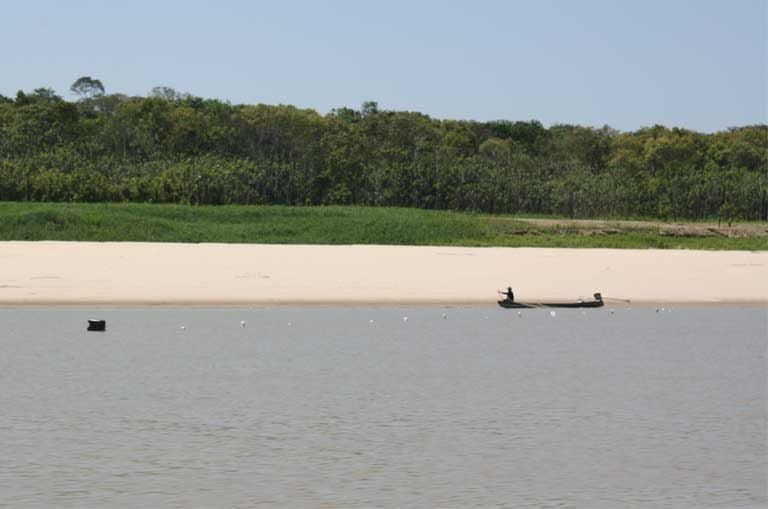

Of the 2,000 turtle nests found by researchers on protected beaches between August and October 2014, only 2 percent were attacked by poachers. In comparison, this percentage reached 99 percent of the 202 nests surveyed on unprotected beaches.
The scientists also compiled 40 years of P. expansa nesting data recorded by local monitors, responsible for guarding the river beaches, as well as data kept by IBAMA, Brazil’s environmental agency. These statistics showed that there are nearly ten times more turtles hatching on the community protected beaches now than there were in 1977. That’s an increase of more than 70,000 hatchlings per year – an extraordinary success story.
Other species have significantly benefited from turtle nest surveillance as well. The study counted much larger populations on protected beaches, compared to beaches with no protection, of terrestrial and aquatic invertebrate and vertebrate taxa. Among species seeing high counts were beach-nesting birds; large catfish; caimans, such as the black alligator (Melanosuchus niger); river dolphin (Inia geoffrensis and Sotalia fluviatilis); and manatee (Trichechus inunguis). In order to be more inclusive, the study employed sonar technology to conduct surveys of large-bodied underwater animals hidden beneath murky river waters.

“Our research highlights the valuable conservation service provided by local communities, not just for turtles but for the wider ecosystem in the Brazilian Amazon,” Joseph Hawes, postdoctoral research fellow at Anglia Ruskin University told Mongabay. “These collateral benefits to other species mean that beach protection is cost-effective, and shows the potential for sustainable local conservation action, even outside existing formally protected areas.”
Importantly, the study refutes a view long-held by some conservationists and government officials who questioned whether local traditional riverine communities should be allowed to continue living within newly designated protected areas. “They advocated that [all human] populations should be evicted from national parks, for instance, which did happen throughout the world, in order to preserve the ecosystems,” said Campos-Silva, who carried out the study fieldwork with Hawes. ”Studies like ours show that environmental preservation will be more effective if sustainable conservation practices are reconciled with local livelihoods.”

A challenging job
Turtle vigilance is not an activity for the faint of heart or the casual beach stroller. It’s a high-risk activity because of the high rates of poaching, and because many poachers are armed, says the study. As a result, many of the 45 community monitors patrolling the 14 beaches also come armed.
To protect turtle nests around the clock, the security patrols work in pairs and shifts, sleeping in wooden shacks on the edge of beaches for five to six months per year during the dry season. Their payment for performing this difficult task during the dry season is a monthly basket of food, containing rice, beans, sugar, coffee, salt, pasta, and more. The cost of these food parcels, along with project oversight responsibility, is shared between governmental agencies and university programs.
24-year-old Rogério Nicolau de Souza, from the rural village of Xibauá, is one of the turtle guardians. Married and with a daughter, the agricultural worker became a monitor at Salomão beach in 2018. Between July and November, he stays there two weeks out of every month.
The trip from his community to Salomão beach takes 30 minutes by motorboat, and the nearest town, Carauari, is seven hours away.
Souza told Mongabay that he had wanted to work as a turtle monitor for some time, but added that, while the monthly food basket payment helps his family, it is not enough to live on. “Still, I like to help with the preservation of animals,” he said. “During our stay on the beach we counted 110 hatchlings out of 140 eggs.” How did he handle potential poachers? “When people wanted to catch them, [the turtles or harvest the eggs] we explained that they could not do it because the area was a reserve.”
The positive biodiversity results seen in the community-based Juruá River turtle conservation project – while encompassing only a microcosm of the Amazon region – are cause for celebration, said Hawes. “Although turtles and other species remain at a fraction of their historical population sizes, the model of community-based conservation offers optimism that long-term recoveries can continue. It is often assumed that conservation requires a top-down approach, frequently excluding local people, but here it is clear that it is precisely the passion, dedication and self-organization of local communities that is responsible for yielding such impressive benefits. By meeting their modest claims, there is hope that this cost-effective approach can be further expanded and inspire others to follow their example.”
Citation:
Campos-Silva, J. V., Hawes, J. E., Andrade, P. C., & Peres, C. A. (2018). Unintended multispecies co-benefits of an Amazonian community-based conservation programme. Nature Sustainability, 1(11), 650.
FEEDBACK: Use this form to send a message to the author of this post. If you want to post a public comment, you can do that at the bottom of the page.









